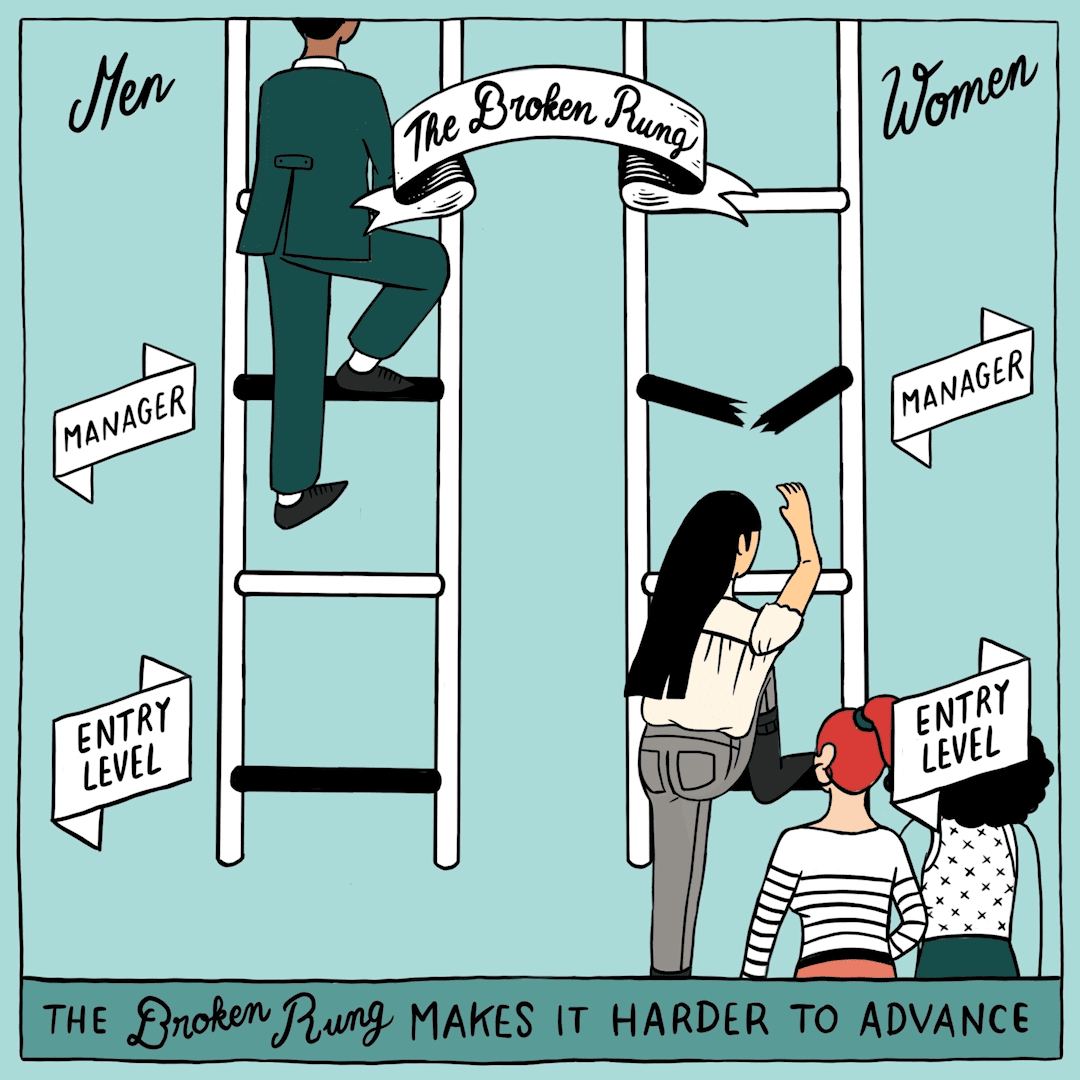
Your New Year Diversity Checklist
Because 208 years is too long for gender parity – here are four actions to speed things up. As 2020 begins and corporate America sets goals for diversity and inclusion here are a few practical things every company can do to move from the sidelines – to become dangerously effective. This is necessary.
According to LeanIn.Org and McKinsey & Company’s annual Women in the Workplace report, women, especially women of color, continue to be underrepresented at every level as reflected in the pipeline chart below. The roadmap to parity is clear: targets and accountability, fair hiring and promotions, executive champions of diversity, inclusive work cultures and workplace flexibility. However, progress year to year has been very slow. No surprise Melinda Gates and the World Economic Forum note that it will take 208 years before we get to parity in the U.S..
I am energized by seven words I heard at PINK’s 15th Anniversary Fall Empowerment Lunch, “You can’t be dangerous from the sidelines.” Those words from legendary media icon and former CNN boss, Pat Mitchell and her spirit of embracing risk to change the world is a call to action for the new year. The risk to embrace, the problem to solve: Low percentages of women in leadership positions and the structural barriers women continue to face.

There is both optimism and gender fatigue these days. Interestingly, employees are overly optimistic about the state of women. As an example, when only 1 in 3 managers in their company is a woman, 62% of men and 54% of women think women are well represented in management. We have a gap in understanding due to lack of education and fear of speaking up for internal policy change to tackle bias in the talent management processes.
The Broken Rung
At the top of the ladder, things have improved by four percentage points. The percent of women in the C-Suite has increased from 17% in 2015, to 21% in 2019. However, the 2019 LeanIn.Org research found the biggest challenge for women climbing the corporate ladder today is that the ladder is busted at the lower levels, or the “broken run”. Getting from entry level to the first manager role is more difficult for women than men. For every 100 men promoted to management, only 72 women are. As a result women are not able to catch up. This leads to the pipeline numbers we see… men hold 62% of manager level roles and women only 38%.

What to Do About It?
To help employees and employers close the gender understanding gap, I launched a non-profit, ShowMe50% Women Leading. We teach men and women how to influence culture change in their companies through education and open dialogue. Here are four practical ways for companies and workgroups to not only repair the broken rung but create high performance teams through inclusion:
- Require diverse slates for hiring and promotions. When your team has an opening, challenge your peers and managers to identify a diverse slate of candidates. Where to find them? Encourage networking in association groups outside your company or networking inside your company by attending Employee/Business Resource Group events (ERGs/BRGs). You can say, “With this opening, we have a great opportunity to bring greater diversity of thought to our team. Let’s be strategic and seek out talent that is different from us. Let’s ensure our list of qualified candidates has gender and other diversity.”
- Require evaluators of talent to complete unconscious bias training and make bias a topic of conversation at team meetings. Be an unapologetic supporter of diversity and inclusion by getting your team used to talking about it, so it becomes just another tool for leadership excellence rather than an initiative. Look for creative ways to integrate bias learning into the day to day. LeanIn.Org has a program called 50 Ways to Fight Bias. It’s a research-backed, card-based activity for use as a fun lunch-n-learn style employee engagement and leadership development tool. ShowMe50 can help you run one and then you can scale it. There are other ways to crush the fear of talking about bias. For example, have your team cover short current events around gender issues to spark dialogue. Watch 3-5 minute contemporary videos about bias. Eventually, your team starts to get it and teams outperform in the inclusive environment. This bias busting helps repair the broken rung.
- Establish clear evaluation criteria before reviews and selections. Decide as a group what are the specific criteria required for success in that job today (not two years ago, not one year ago, today). Is it education, experience? What kind of projects and outcomes? Make a detailed list that everyone agrees to. Then discuss how you will rate candidates. What scale? What does each rating mean exactly? Talk about it. Then interview, then rate, then discuss. Challenge each other on differences of opinion. Bias is reduced when criteria is clearly defined in advance, there is an agreed rating structure, and the selection / rating team discusses their rating justification openly.
- Be intentional about sponsoring women for management roles. Talk about the desire to have the perspectives of women at all management levels. Ask your team what women are being developed for management roles. If there aren’t many, ask why not. Have an open discussion. There needs to be more urgency about mentoring and sponsoring women. Busting bias requires talking about it.
Review your company’s talent management practices to discover what’s working well and leverage these four actions to accelerate your results. As progressive leaders we can be dangerously effective for inclusion and advancing opportunities for women in 2020.
“You can’t be dangerous from the sidelines.” –Pat Mitchell,
Former CNN Boss and author of Becoming a Dangerous Woman
By Elba Pareja-Gallagher
Elba Pareja-Gallagher is a Director of Finance at UPS, and the Founder and CEO of ShowMe50, a 501(c)(3) social impact organization. She can be reached at [email protected].
*Images used with permission from LeanIn.Org.
Recommended
-
5 Skin Care Trends: What Profe...April 10th, 2024
-
The Power Of Saying “No” W...March 22nd, 2024
-
Is It Time To Change Your Rela...March 20th, 2024
-
Resilience & Transformati...February 20th, 2024
-
Letting Go Of Trying Harder To...January 23rd, 2024















